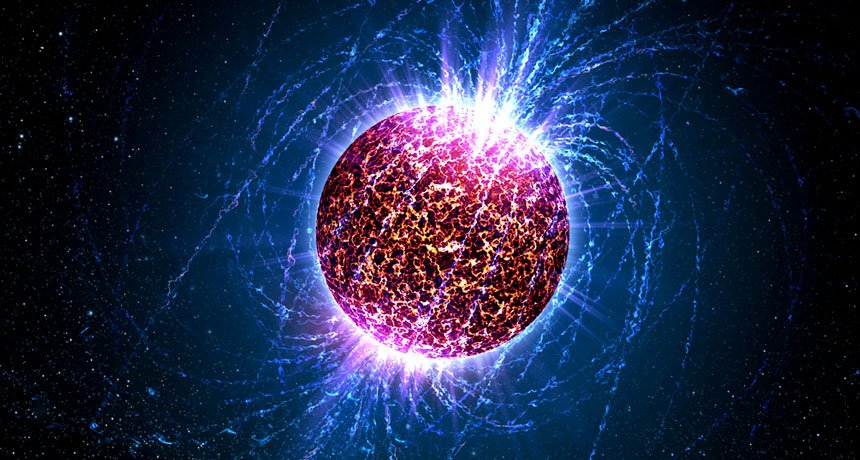Nuclear pasta in neutron stars may be the strongest material in the universe

A strand of spaghetti snaps easily, but an exotic substance known as nuclear pasta is an entirely different story.
Predicted to exist in ultradense dead stars called neutron stars, nuclear pasta may be the strongest material in the universe. Breaking the stuff requires 10 billion times the force needed to crack steel, for example, researchers report in a study accepted in Physical Review Letters.
“This is a crazy-big figure, but the material is also very, very dense, so that helps make it stronger,” says study coauthor and physicist Charles Horowitz of Indiana University Bloomington.
Neutron stars form when a dying star explodes, leaving behind a neutron-rich remnant that is squished to extreme pressures by powerful gravitational forces, resulting in materials with bizarre properties (SN: 12/23/17, p. 7).
About a kilometer below the surface of a neutron star, atomic nuclei are squeezed together so close that they merge into clumps of nuclear matter, a dense mixture of neutrons and protons. These as-yet theoretical clumps are thought to be shaped like blobs, tubes or sheets, and are named after their noodle look-alikes, including gnocchi, spaghetti and lasagna. Even deeper in the neutron star, the nuclear matter fully takes over. The burnt-out star’s entire core is nuclear matter, like one giant atomic nucleus.
Nuclear pasta is incredibly dense, about 100 trillion times the density of water. It’s impossible to study such an extreme material in the laboratory, says physicist Constança Providência of the University of Coimbra in Portugal who was not involved with the research.
Instead, the researchers used computer simulations to stretch nuclear lasagna sheets and explore how the material responded. Immense pressures were required to deform the material, and the pressure required to snap the pasta was greater than for any other known material.
Earlier simulations had revealed that the outer crust of a neutron star was likewise vastly stronger than steel. But the inner crust, where nuclear pasta lurks, was unexplored territory. “Now, what [the researchers] see is that the inner crust is even stronger,” Providência says.
Physicists are still aiming to find real-world evidence of nuclear pasta. The new results may provide a glimmer of hope. Neutron stars tend to spin very rapidly, and, as a result, might emit ripples in spacetime called gravitational waves, which scientists could detect at facilities like the Advanced Laser Interferometer Gravitational-wave Observatory, or LIGO. But the spacetime ripples will occur only if a neutron star’s crust is lumpy — meaning that it has “mountains,” or mounds of dense material either on the surface or within the crust.
“The tricky part is, you need a big mountain,” says physicist Edward Brown of Michigan State University in East Lansing. A stiffer, stronger crust would support larger mountains, which could produce more powerful gravitational waves. But “large” is a relative term. Due to the intense gravity of neutron stars, their mountains would be a far cry from Mount Everest, rising centimeters tall, not kilometers. Previously, scientists didn’t know how large a mountain nuclear pasta could support.
“That’s where these simulations come in,” Brown says. The results suggest that nuclear pasta could support mountains tens of centimeters tall — big enough that LIGO could spot neutron stars’ gravitational waves. If LIGO caught such signals, scientists could estimate the mountains’ size, and confirm that neutron stars have superstrong materials in their crusts.